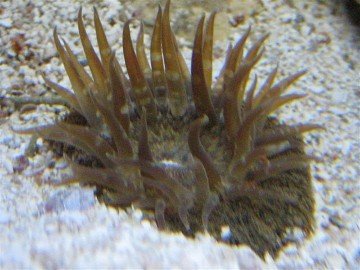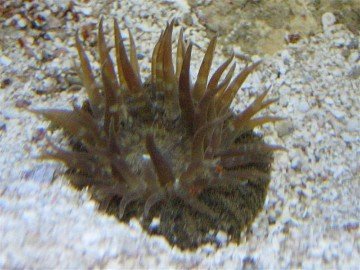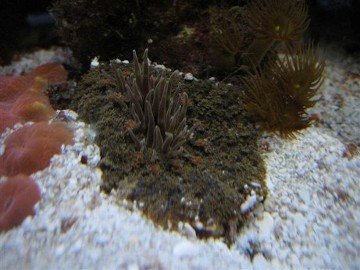Does anyone know what kind of anenome this is? Anyone have any experience with them in a reef tank, especially a nano?
I caught it Sunday in about 8 feet of water, in some sand and rubble near a rocky area off of Singer Island (S. Florida, Atlantic coast).
It has a yellow basal disc, about 1" in diameter, and when fully open, the body expands to about 3" in diameter. The center tentacles are mottled brown surrounded with a "skirt" of tiny tentacles. The center tentacles and surrounding skirt are extremely sticky.
I'm trying to keep it in sand temporarily and away from rocks (and permanent attachment, hopefully) until I can ID it. It happily eats frozen mysis shrimp.
I'm leaning towards Actinoporus elegans.... If I can't figure it out in another day or so, it's going back to the ocean, just to be on the safe side.
Thanks.
I caught it Sunday in about 8 feet of water, in some sand and rubble near a rocky area off of Singer Island (S. Florida, Atlantic coast).
It has a yellow basal disc, about 1" in diameter, and when fully open, the body expands to about 3" in diameter. The center tentacles are mottled brown surrounded with a "skirt" of tiny tentacles. The center tentacles and surrounding skirt are extremely sticky.
I'm trying to keep it in sand temporarily and away from rocks (and permanent attachment, hopefully) until I can ID it. It happily eats frozen mysis shrimp.
I'm leaning towards Actinoporus elegans.... If I can't figure it out in another day or so, it's going back to the ocean, just to be on the safe side.
Thanks.



